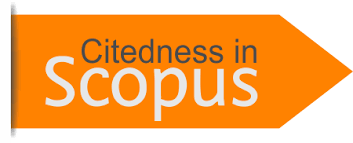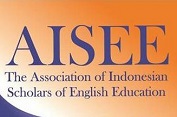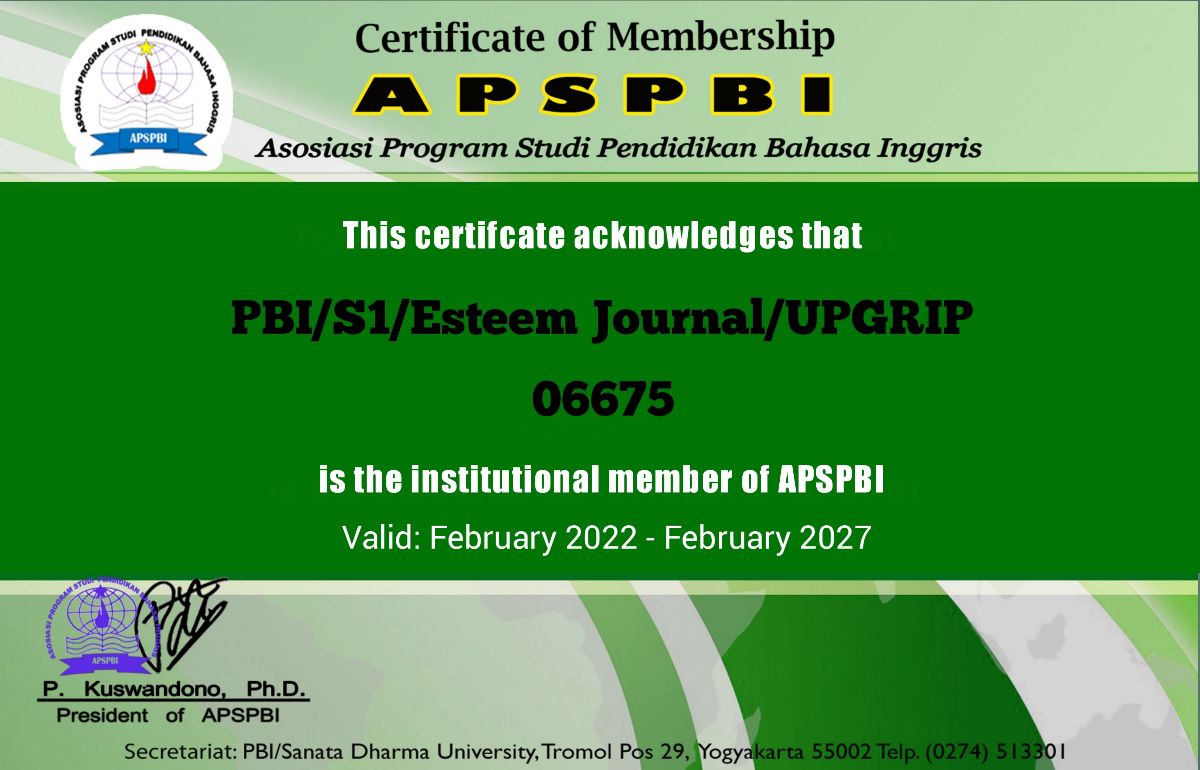THE RELATIONSHIP BETWEEN LISTENING STRATEGIES AND STUDENT’S ACHIEVEMENT AT 2nd SEMESTER STUDENTS OF ACCOUNTING PROGRAM POLITEKNIK SEKAYU
DOI:
https://doi.org/10.31851/esteem.v1i1.4832Keywords:
listening strategies, student’s achievementAbstract
Abstract: the aimed of the current study was to describe the relationship between listening strategies and student’s achievement at second semester students of accounting program Politeknik Sekayu. A total population of the research was 160 students. The sample was taken by using convenience sampling which consist of 86 students were involved in this study. Futhermore, there were two variables in this research. The first one was listening strategies (variable X) and the second one was student’s achievement (variable Y). A listening strategy questionnaire was used to identify the strategies they employed in listening was taken from scoring. Based on the data analysis of the listening strategy questionnaire revealed that 2nd semester students of accounting program, it was found that the r-obtained (0.176) was higher than r- table (0.0845). then the level of probability (p) significant relationship (sig.2-tailed) was 0.043. it means that p (0.043) was lower than .05. it meant that null hypothesis (Ho) is rejected and the alternative hypothesis (Ha) is rejected. From the reserch finding, it can be concluded that there was significant relationship between the listening strategies and the students’ listening achievementReferences
(http://www.nclrc.com/methodteachinglist ening.htm)
Malkawi, A.H. (2010). Listening comprehension for tenth grade students in tabaria high school for girls. Journal of Language Teaching and Research, I(6), 71- 775
Morley, J. 1991. Listening comprehension in second/foreign language instruction. In M. Celce-Murcia (Ed.),Teaching English as a second or foreign language (pp. 81- 106). Boston,MA:Heinle&Heinle.(On line).(http://www.nclrc.com/methodteachi nglisteninhtm)
O’Malley, J.M.,A.U.Chamot, G.Stewner – Manzanares, L. Kupper, and R.Russo. (1985). Learning strategies used by lower-intermediate and intermediate ESL students. Language Learning 35:21- 46.
O’Malley,J.M., Chamot, A.U., & Kupper, L.(1989). Listening comprehension startegies in second language acquisition. Applied Linguistics, 10 (4), 418-437.
O’Malley, J.M., and Chamot, A.U. (1990). Learning strategies in second language acquisition. English; Cambridge University Press.
Oxford, R.L. (1990). Language learning strategies; what every teacher should know. NewYork: Newbury House Harper Collins.
Oxford, R.L.(1993). Research update on teaching L2 listening. System, 21(2), 205- 211
Scarcella,R.L., and Oxford.R.I (1992). The tapestry of language learning: the Individual in the communicative classroom. Boston, MA: Heinle& Heinle.
Vandergrift, L.(1996). Istening strategies of core French high school students. Canadian Modern Language Review, 52(2),200-223.
Vandergrift, L.(1997). The comprehension strategies of second language (French)listeners: A descriptive study. Foreign Language Annals, 30,387-409.
Vandergrift, L.(2003). Orchestrating strategy use: toward a model of the skilled secondlanguage listeners: a descriptive study.
Vandergrift, L.,Goh, C.,Mareschal, C.& Tafaghodatari, M.H.(2006). The meta- cognitive awareness listening questionnaire (MALQ): development and validation. Language learning, 56(3), 431- 462.
Young, M.Y.C.(1997). A serial ordering of listening comprehension strategies used by advanced ESL learners in Hong Kong. Asian Journal of English Language Teaching,1,35-53
Downloads
Published
Issue
Section
License
Copyright Notice
Authors who publish with this journal agree to the following terms:
In order to assure the highest standards for published articles, a peer review policy is applied. In pursue of the compliance with academic standards, all parties involved in the publishing process (the authors, the editors and the editorial board and the reviewers) agree to meet the responsibilities stated below in accordance to the Journal publication ethics and malpractice statement.
Duties of Authors:
- The author(s) warrant that the submitted article is an original work, which has not been previously published, and that they have obtained an agreement from any co-author(s) prior to the manuscript’s submission;
- The author(s) should not submit articles describing essentially the same research to more than one journal;
- The authors(s) make certain that the manuscript meets the terms of the Manuscript Submission Guideline regarding appropriate academic citation and that no copyright infringement occurs;
- The authors(s) should inform the editors about any conflict of interests and report any errors they subsequently, discover in their manuscript.
Duties of Editors and the Editorial Board:
- The editors, together with the editorial board, are responsible for deciding upon the publication or rejection of the submitted manuscripts based only on their originality, significance, and relevance to the domains of the journal;
- The editors evaluate the manuscripts compliance with academic criteria, the domains of the journal and the guidelines;
- The editors must at all times respect the confidentiality of any information pertaining to the submitted manuscripts;
- The editors assign the review of each manuscript to two reviewers chosen according to their domains of expertise. The editors must take into account any conflict of interest reported by the authors and the reviewers.
- The editors must ensure that the comments and recommendations of the reviewers are sent to the author(s) in due time and that the manuscripts are returned to the editors, who take the final decision to publish them or not.
Authors are permitted and encouraged to post online a pre-publication manuscript (but not the Publisher final formatted PDF version of the Work) in institutional repositories or on their Websites prior to and during the submission process, as it can lead to productive exchanges, as well as earlier and greater citation of published work (see The Effect of Open Access). Any such posting made before acceptance and publication of the Work shall be updated upon publication to include a reference to the Publisher-assigned DOI (Digital Object Identifier) and a link to the online abstract for the final published Work in the Journal.





























